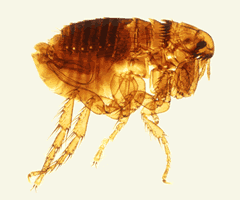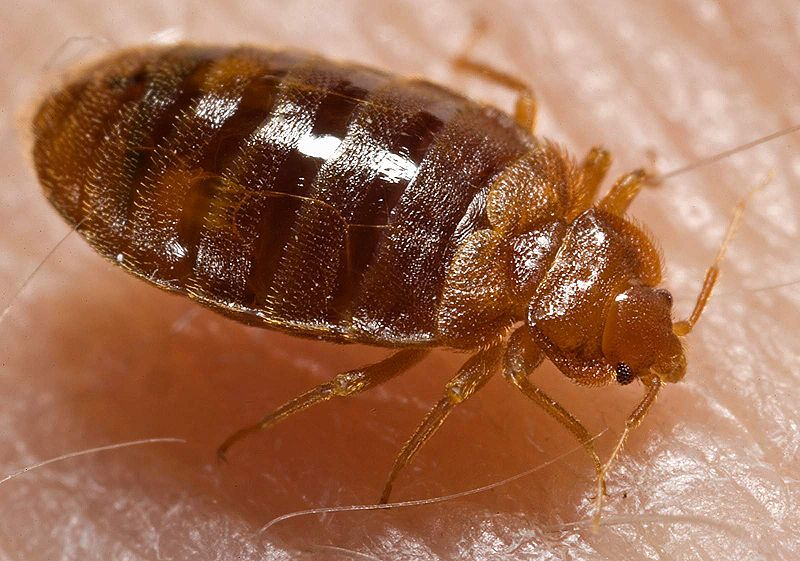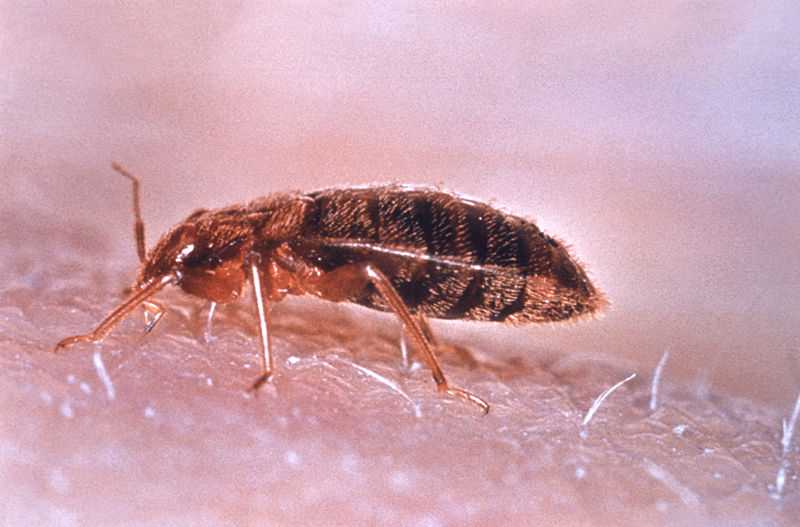Fleas - (Cat - ctenocephalides felis) (Dog - ctenocephalides canis)
Identification - Adult fleas are like small, wingless insects with dark-coloured bodies measuring between 1 and 3mm in length. The body of the flea is flattened from side to side and is covered with pointed spines which allow it to move easily through the hairs or feathers of its host.Flea larvae emerge from the eggs to feed on any available organic material such as dead insects, faeces and vegetable matter. They are blind and avoid sunlight, keeping to dark places like sand, cracks and crevices, and bedding. Given an adequate supply of food, larvae should pupate within 1-2 weeks. After going through three larval stages they spin a silken cocoon. After another week or two the adult flea is fully developed and ready to emerge from the cocoon. Once the flea reaches adulthood its primary goal is to find blood. Adult fleas only have around a week to find food once they emerge, though they can survive two months to a year between meals.
Control - Treat infestation using a fine spraying insecticide which kills all fleas, eggs and there larvae.If there are dogs/cats in the household the owner will need to treat them accordingly.
Bed bugs - The bed bug (cimex lectularius)
Identification - Adults strongly depressed, oval body, reddish brown, length of females are 4mm - 8mm. Males are slightly smaller. Normally mahogany red brown, but become purple after feeding. Their eggs are slightly curved, pearly white and 0.8mm - 1.3mm long.
The bed bug is a nocturnal insect that feeds on human blood. It is generally found living either in or close to a bed or human sleeping place. Thoroughness is essential to a successful bed bug eradication programme, and as with most pest control, housekeeping plays a major role. Bedbugs are generally active only at night, with a peak attack period about an hour before dawn. Attracted by warmth and the presence of carbon dioxide, the bug pierces the skin of its host with two hollow tubes. After feeding for about five minutes, the bug returns to its hiding place. The bites cannot usually be felt until some minutes or hours later. Although bedbugs can live for a year or as much as 18 months without feeding, they typically seek blood every five to ten days.
Control - Treat infestation using a wet spraying insecticide which kills the bed bugs and their eggs.
Fleas and Bedbugs




